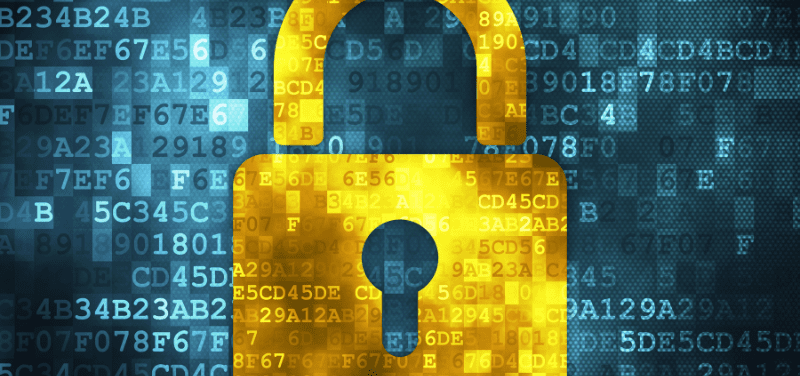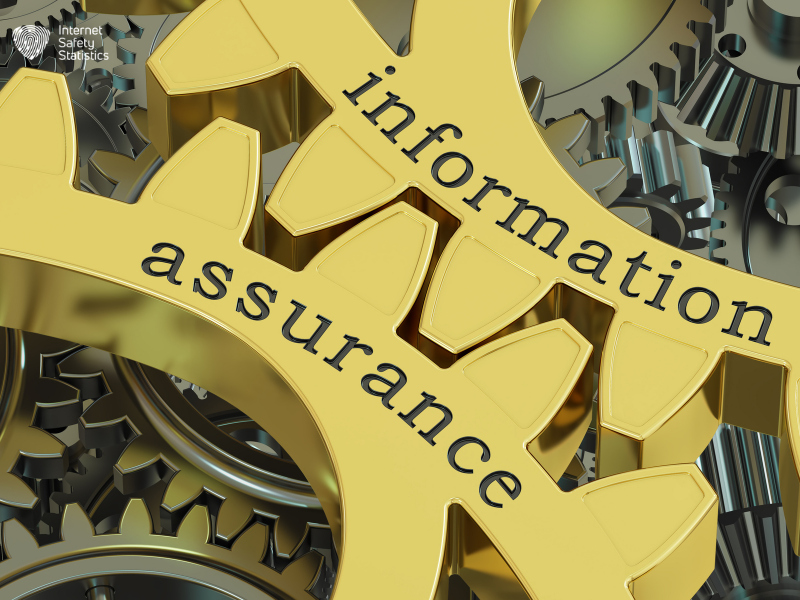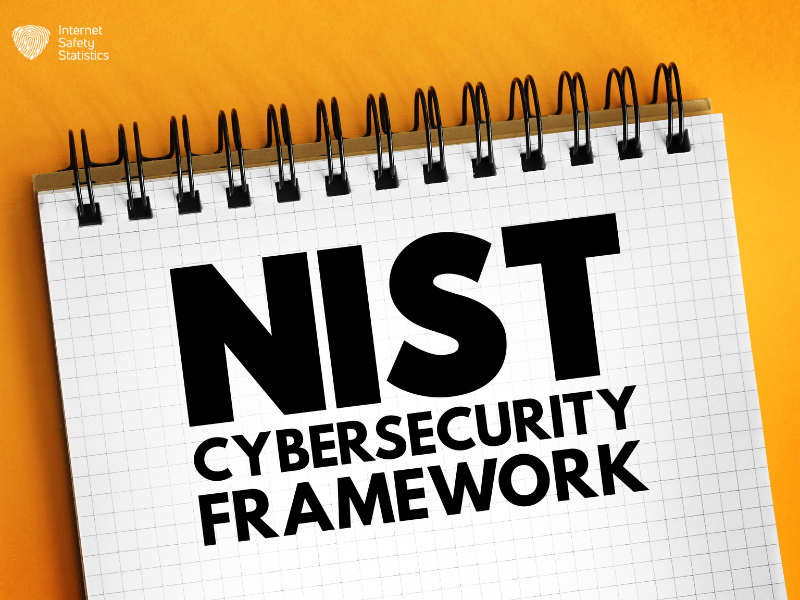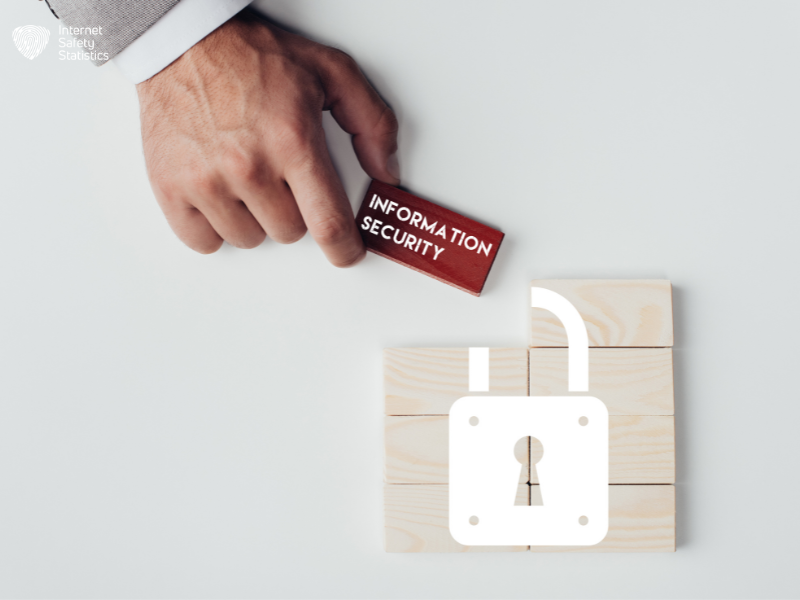
Information security and assurance are two terms that might sound like close cousins, yet their nuanced differences hold the key to truly securing our valuable data in the digital age. While often used interchangeably, each concept plays a distinct role in the grand orchestra of online protection. This article invites you to step into the conductor’s shoes, understanding how these vital components work together to safeguard our information ecosystem.
We’ll embark on a journey to disentangle the threads that bind Information Assurance and Information Security. We’ll explore the broader perspective of Information Assurance, not just focusing on data protection, but also its availability, integrity, and confidentiality. On the other hand, we’ll delve into the laser-focused world of Information Security, examining its specific methods and technologies for guarding our precious digital assets.
By demystifying these concepts, we empower ourselves to navigate the complex security landscape. This knowledge unlocks the power to make informed decisions and implement effective strategies, ensuring the resilience and trustworthiness of our information world. So, join us on this quest for understanding, and together, let’s unlock the true potential of information protection!
Information Assurance overview

In today’s data-driven world, safeguarding information is not just a technical challenge, but a strategic imperative. This is where Information Assurance (IA) steps in, offering a comprehensive and holistic approach to ensuring the confidentiality, integrity, availability, authenticity, and non-repudiation of information within an organisation.
In conclusion, Information Assurance is not just an option, but a necessity in today’s digital world. By adopting a holistic approach and understanding its various facets, organisations can build a robust defense, secure their valuable information, and thrive in the face of the ever-evolving threat
Core components
Information assurance (IA) is a comprehensive approach to securing information systems and protecting the data they contain. It has five core components that work together to ensure the confidentiality, integrity, availability, authenticity, and non-repudiation of information.
- Confidentiality: This component ensures that only authorised individuals can access and view sensitive information. This is often achieved through the use of access controls, encryption, and other security measures.
- Integrity: This component ensures that information is accurate and complete and has not been modified or tampered with. This can be achieved through the use of checksums, digital signatures, and other data integrity verification techniques.
- Availability: This component ensures that information is accessible to those who need it when they need it. This can be achieved through the use of redundant systems, backup and recovery procedures, and disaster recovery plans.
- Authenticity: This component ensures that information is genuine and comes from the source that it claims to be. This can be achieved through the use of digital certificates, digital signatures, and other authentication mechanisms.
- Non-repudiation: This component ensures that a party cannot deny that they performed a particular action or created a particular piece of information. This can be achieved through the use of digital signatures, timestamps, and other non-repudiation mechanisms.
These five core components are essential for achieving information assurance. By focusing on all of these components, organisations can create a more secure and reliable information environment.
In addition to the five core components, information assurance also includes a number of other important elements, such as:
- Risk management: Identifying, assessing, and mitigating risks to information systems and data.
- Compliance: Adhering to relevant laws, regulations, and industry standards.
- Incident response: Having a plan in place to respond to security incidents.
- Security awareness and training: Educating employees about security best practices.
By implementing a comprehensive information assurance program, organisations can protect their valuable information and assets from a wide range of threats.
Implementation and strategies
Information Assurance (IA) isn’t just a set of principles; it’s an action plan. Effectively implementing IA requires a multifaceted approach, encompassing various strategies and steps to achieve its core objectives. Here’s a breakdown of key implementation strategies:
1. Governance and Framework

- Establish clear policies and procedures: Define roles, responsibilities, and security standards for information handling, access, and usage.
- Adopt a recognised framework: Utilise established frameworks like NIST Cybersecurity Framework (CSF) or ISO 27001 to guide your implementation and ensure alignment with best practices.
- Build a dedicated team: If possible, establish a dedicated information security team responsible for implementing and managing the IA program.
2. Risk Management:
- Identify and assess risks: Conduct regular risk assessments to identify potential threats, vulnerabilities, and their impact on your information assets.
- Prioritise mitigation efforts: Allocate resources and focus on addressing the most critical risks first.
- Implement risk management controls: Employ appropriate controls like access controls, encryption, and intrusion detection systems to mitigate identified risks.
3. Technical Controls:
- Implement security tools and technologies: Utilise firewalls, intrusion detection/prevention systems (IDS/IPS), antivirus software, and data encryption to safeguard your systems and data.
- Maintain and update systems: Regularly patch and update software and firmware to address vulnerabilities and ensure system integrity.
- Control physical access: Implement physical security measures like access control systems and security cameras to protect physical infrastructure.
4. Awareness and Training:
- Educate employees on security practices: Conduct regular training sessions on cyber security best practices, phishing awareness, and password hygiene.
- Promote a culture of security: Encourage employees to report suspicious activity and be mindful of their online behavior.
- Integrate security into processes: Embed security considerations into all organisational processes and workflows.
5. Incident Response:
- Develop an incident response plan: Define clear steps for identifying, containing, and recovering from security incidents.
- Test and practice your plan: Regularly conduct simulations and exercises to ensure your team is prepared to respond effectively.
- Learn from incidents: Analyse past incidents to identify root causes and improve your security posture.
Remember, IA implementation is an ongoing process:
- Continuously monitor and assess: Regularly review your IA program’s effectiveness and adapt to evolving threats and vulnerabilities.
- Seek professional guidance: Consider consulting with information security professionals for assistance in implementing and maintaining your IA program.
By adopting these strategies and tailoring them to your specific needs, you can build a robust and effective IA program that protects your valuable information assets and empowers your organisation to thrive in the digital age.
Additional Strategies to Consider:
- Penetration testing: Regularly conduct penetration testing to identify and address vulnerabilities in your systems and network.
- Data loss prevention (DLP): Implement DLP solutions to prevent sensitive data from being exfiltrated or leaked accidentally.
- Continuous security monitoring: Continuously monitor your systems and network for suspicious activity and potential threats.
- Compliance with regulations: Ensure your IA program aligns with relevant industry regulations and compliance requirements.
Remember, a successful IA program requires a comprehensive approach that combines governance, risk management, technical controls, awareness, and ongoing vigilance. By implementing these strategies and fostering a security-conscious culture, you can safeguard your digital realm and build resilience against ever-evolving threats.
Information Security Overview

Think of information as a precious treasure hidden within a castle. While Information Assurance stands as the overall strategic architect, Information Security (IS) acts as the vigilant guard, actively defending that treasure with an arsenal of technical tools and measures.
IS focuses on safeguarding information from a wide range of threats, including:
- Unauthorised access: Preventing intruders from accessing sensitive data by using tools like firewalls, access controls, and multi-factor authentication.
- Data breaches: Encrypting data with algorithms that make it unreadable if stolen, thereby hindering its misuse.
- Malicious software: Deploying antivirus, anti-malware, and endpoint protection software to detect and eradicate harmful programs.
- System vulnerabilities: Regularly patching and updating software and firmware to close security gaps that attackers could exploit.
- Disruption: Implementing redundant systems and backup solutions to ensure information remains accessible even if systems experience outages.
- Modification: Utilising data integrity checks and checksums to detect any unauthorised changes to information.
IS operates at a tactical and technical level, implementing specific solutions to address these threats. It’s like equipping your guards with specific weapons and shields based on the enemy they face. Here are some examples:
- Firewalls: Act as gatekeepers, filtering incoming and outgoing traffic to allow only authorised access.
- Encryption: Scrambles data into an unreadable format, rendering it useless to unauthorised individuals even if intercepted.
- Access controls: Define who can access specific information and what they can do with it, restricting unauthorised use.
- Intrusion detection/prevention systems (IDS/IPS): Monitor network activity for suspicious behavior and can block potential attacks.
- Data loss prevention (DLP): Monitors and controls data transfers to prevent sensitive information from leaving the organisation unauthorised.
- Vulnerability scanning: Regularly scans systems for known vulnerabilities and alerts administrators to potential risks.
Remember, IS is just one part of the security puzzle. It works hand-in-hand with Information Assurance, which provides the broader strategy and governance framework. Together, they create a comprehensive defense system for your valuable information assets.
Key points to remember:
- IS focuses on technical measures and tools to protect information from specific threats.
- It employs a tactical and targeted approach, choosing the right tools for the job.
- While crucial, IS works best as part of a broader Information Assurance strategy.
By understanding and implementing effective Information Security measures, you can significantly reduce the risk of data breaches, disruptions, and other security incidents, safeguarding your digital assets and protecting your organisation’s vital information.
Comparing Information Assurance and Information Security
In today’s data-driven world, securing information necessitates a multi-layered approach. While often used interchangeably, Information Assurance (IA) and Information Security (IS) play distinct, yet complementary roles in safeguarding our digital assets. Let’s delve into their key differences through the lens of scope, focus, activities, core principles, and implementation strategies.
Scope:
- IA: Takes a broader, holistic view, encompassing the entire information ecosystem. This includes data confidentiality, integrity, availability, authenticity, and non-repudiation, alongside risk management, compliance, disaster recovery, and overall trustworthiness of information systems.
- IS: Focuses on the technical measures directly protecting information assets. This includes implementing tools like firewalls, encryption, and access controls to prevent unauthorised access, use, disclosure, disruption, modification, or destruction.
Focus:
- IA: Strategic and preventative, aiming to establish a robust security posture and mitigate risks before they materialise.
- IS: Tactical and reactive, implementing specific measures to address identified threats and vulnerabilities.
Activities:
- IA:
- Develops and implements security policies and procedures.
- Conducts risk assessments and vulnerability analyses.
- Manages compliance with regulations and standards.
- Oversees disaster recovery and incident response plans.
- Promotes a culture of security awareness within the organisation.
- IS:
- Deploys and configures security tools and technologies.
- Monitors and analyses security logs and alerts.
- Patches and updates software and firmware.
- Investigate and respond to security incidents.
- Provides security training for employees.
Core Principles:
Both IA and IS share the same key principles of confidentiality, integrity, availability, authenticity, and non-repudiation (CIAAN), but their implementation differs:
- Confidentiality: IA emphasises policies and awareness, while IS uses encryption and access controls.
- Integrity: IA focuses on data validation, while IS employs checksums and digital signatures.
- Availability: IA ensures redundancy and disaster recovery, while IS implements uptime solutions.
- Authenticity: IA verifies sources through policies, while IS relies on digital certificates and multi-factor authentication.
- Non-repudiation: IA uses logging and auditing, while IS leverages digital signatures and secure transactions.
Implementation Strategies:
- IA:
- Develop and maintain a comprehensive information security program.
- Conduct regular risk assessments and security audits.
- Train employees on security policies and procedures.
- Implement incident response and business continuity plans.
- Stay updated on evolving threats and best practices.
- IS:
- Deploy and maintain security tools and technologies.
- Monitor and analyse security events for anomalies.
- Patch and update software and firmware regularly.
- Conduct penetration testing to identify vulnerabilities.
- Stay informed about emerging threats and vulnerabilities.
The Collaboration Between Information Assurance and Information Security
In the digital age, safeguarding valuable information requires more than just a locked door. It demands a multi-layered defense system, where Information Assurance (IA) and Information Security (IS) work hand-in-hand like two sides of the same coin. While their approaches differ, their collaboration is crucial for effective information protection.
IS: The Technical Vanguard
Imagine information security as the frontline warriors, actively defending information with technical prowess. They wield a diverse arsenal of tools like firewalls, encryption, and access controls to shield data from unauthorised access, modification, or destruction.
IA: The Strategic Architect
Think of IA as the wise commander, overseeing the entire information ecosystem. It establishes the overall strategy, ensuring data confidentiality, integrity, availability, authenticity, and non-repudiation (CIAAN) through risk management, compliance, and disaster recovery plans.
Collaboration: The Synergy of Strength
While IS acts as the shield, IA forms the foundation. Just as a shield needs a strong arm to wield it, IS relies on IA’s strategic guidance and risk assessments to prioritise its efforts. Conversely, IA’s plans are rendered ineffective without the technical tools and controls implemented by IS.
Real-World Collaboration in Action:
- Disaster Recovery: When a natural disaster strikes, IA’s disaster recovery plan outlines recovery steps, while information security ensures data backups and system redundancy are functional for swift restoration.
- Compliance: IA identifies relevant regulations, and IS implements technical controls like encryption and access management to achieve compliance.
- Incident Response: Upon a security breach, IA activates the incident response plan, while IS identifies the breach source, contains the damage, and recovers lost data.
The Interdependence is Inevitable:
- Without effective technical controls from IS, even the most robust IA strategy remains vulnerable.
- Without IA’s broad vision and risk management, IS efforts might be scattered and ineffective.
Remember: IA and IS are not separate entities, but rather two facets of a unified approach to information security. Their synergy creates a comprehensive defense system, capable of adapting to ever-evolving threats and safeguarding valuable information in our digital world.
Conclusion
Our journey through the intricate relationship between Information Assurance (IA) and Information Security (IS) culminates in a resounding truth: they are not rivals, but rather complementary guardians of our digital realm. Understanding their distinct roles is key to building a truly secure information ecosystem.
By leveraging the combined power of IA and IS, and continuously seeking knowledge, we can create an impenetrable fortress around our valuable information, safeguarding it from ever-evolving threats and ensuring a secure digital future. Remember, collaboration is key, and understanding these intricate concepts empowers you to be a responsible guardian of your digital realm.
